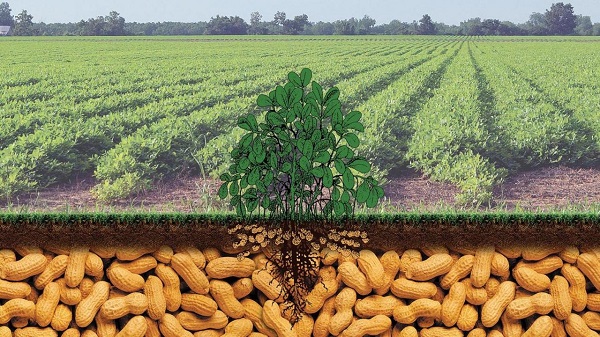By Spy Uganda
Kampala: Most farmers in Uganda are now embracing high-value crops like groundnuts and soybeans, slowly ditching unprofitable traditional crops like maize and beans.
READ ALSO: Farmer’s Guide: When & How To Harvest Passion Fruit
It is estimated that a farmer can harvest up to 1.6 tonnes of groundnuts in an acre piece of land. The crop requires less maintenance and adds valuable nitrogen to soils if compared to maize which can earn a farmer less than 40 bags weighing 90kg.

Even so, do farmers really know the conditions and how to grow groundnuts profitably? Have no worries as because we have prepared all that for you.
Conditions For Growth

Groundnuts grow well in warm areas, below 1500 meters above sea level with temperatures ranging 28-30 degrees census. Low temperatures affect their flowering and seed formation. They also need 500 to 600 mm of rainfall, well-distributed throughout the growing season. The crop can survive drought or reduced rain but yields will be low. Well-drained soils are needed although the crop can also grow well in clay soils.
READ ALSO: Farmer’s Guide: Why Does Passion Fruit Rot On Plant?
When & How To plant
Just like maize, groundnut is an early-season crop hence it must be grown at the onset of rains. In Uganda for instance, the best planting seasons are Feb-March and August-September. Groundnut varieties differ in size, colour and shape.
Varieties found in Uganda include Red Oriata, Manipinta, Makulu Red, Bukene, Homa Bay, Texas Peanut, Red Valencia and Atika. Depending on sizes, a space of 30-45cm is needed between rows and 15-20 between plants. This mean, an acre farm can accommodate up to 66,000 crops which is equivalent to at least 16 kilos of seeds that are sowed to the depth of 5-6 cm.
Weeding
Weeding is supposed to commence 2-3 weeks after germination and more often during the early stages of growth. Earthling up should be done at the time of weeding to encourage pegging, or penetration of young nuts into the soil. It is recommended that farmers use hand weeding after the start of pegging to avoid disturbing the growing nuts or damaging the flowers. Clean weeding should take place up to 6 weeks after which only hand weeding should be done.
READ ALSO: Farmers Guide: Here Are Harvesting Steps In Sugar Cane Farming
Instead of nitrogen fertilizer as the crop is self-sustaining, groundnuts requires adequate calcium especially when pods are forming. Phosphate fertilizer at the rate of 40kg per acre is also needed to boost the firmness of the crop.
Disease & Pest Control
Groundnuts are highly susceptible to various pests and diseases throughout all stages of growth. Termites, aphids, white grabs and millipedes which attack roots, stem base, leaves and pods can be prevented by either early planting, observe high farm hygiene, conserving natural enemies, timely harvesting and using well-decomposed manure.
READ ALSO: Farmer’s Guide: How & When To Grow Carrots For A Fruitful Harvest
However, virus diseases like Rust, Bacteria Wilt and groundnut rosette virus accounts for 80 per cent of groundnut damaged while on the farm. Others include leaf spot, crown rot and damping-off disease. In order to prevent these devastating diseases, farmers are advised to practice measures like crop rotation, observe farm hygiene, planting using certified seeds and control pests like vector aphids.
Harvesting
Although the average maturity time for most groundnuts is estimated at 100 days, some do mature as early as 90days while others take up to 130 days, depending also on climatic conditions. Much consciousness should be observed while harvesting to avoid breaking offs. Seeds should be well dried after shelling to avoid aflatoxin and other post-harvest loss including pests and rot.








